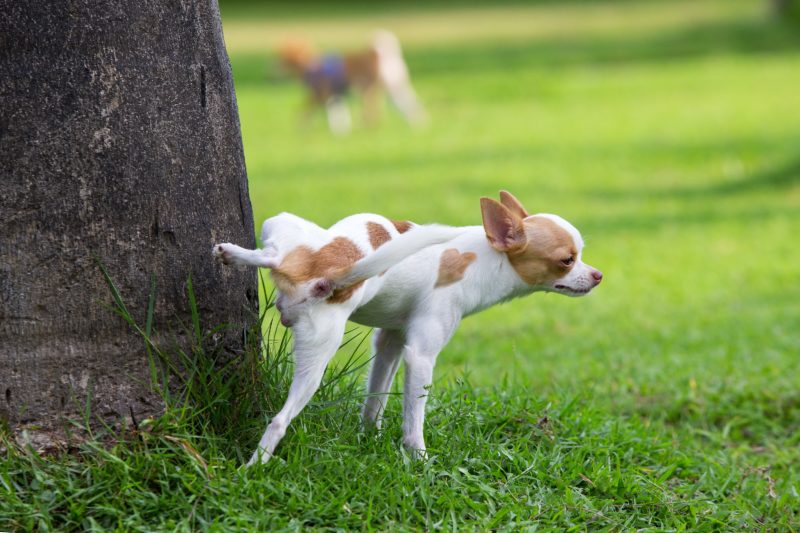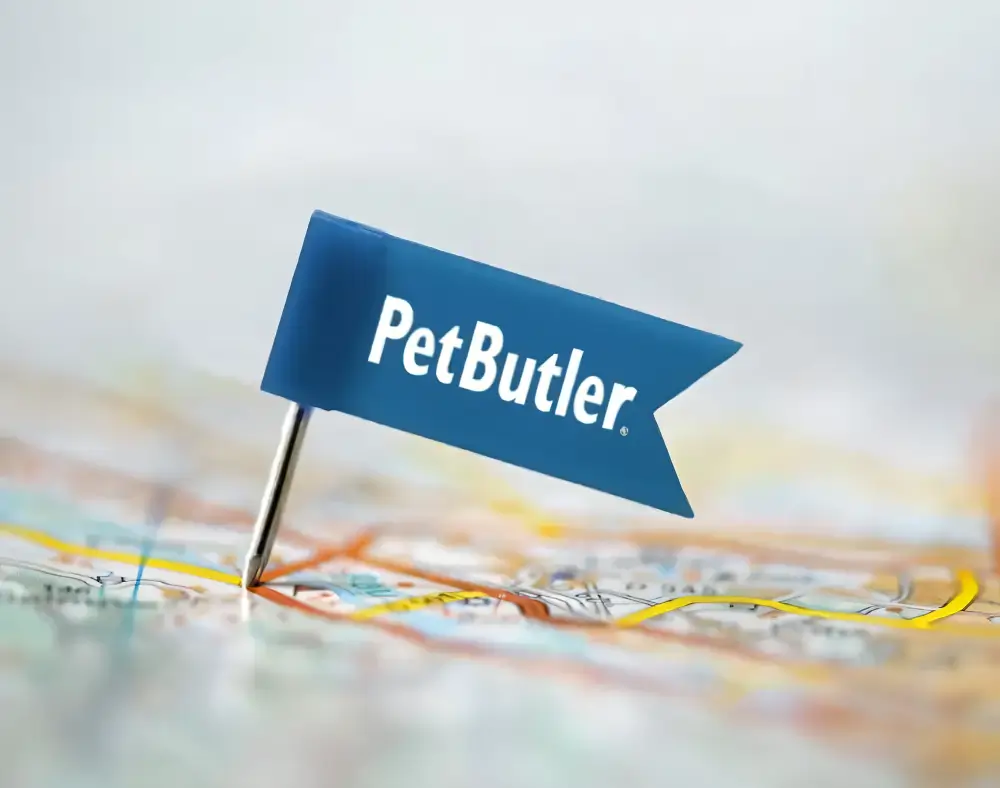Naturally, a follow-up to our ever-popular poop blog would be about the wonders of the urinary system. Specifically, what do all the smells, colors, volume, method, and frequency of your pet’s urine excretion mean about their overall health and behavior? There is a wide variation in “normal” pet urination, from amount of water consumed (and thus presumably urinated), to the color of urine and everything in between. Let’s cover a bit about what is typical and how to know if your pet’s urinary system has gone haywire.
FAQs About Dog Urine
Urine is constantly being formed by the kidneys when the body’s blood is filtered. The urine then and travels through tiny tubes called ureters from each kidney to the bladder. When the muscular bladder contracts or becomes overly full, urine is forced down the urethra (which courses through the male’s prostate gland), and out a small opening in the male or female sex organs. Blood volume, hydration, and thus urine volume has a lot to do with how much water your pet has consumed; normal dogs drink about an ounce per pound of body weight a day.
How Much?
This translates into 10-20 ml urine produced per pound per day. Smaller and younger dogs tend to be on the higher end of this number. For example, a 10-pound dog may urinate a cup of pee a day! Dogs that urinate frequently but are straining to do so with minimal urine output and discomfort undoubtedly have inflammation and/or obstruction in the urinary tract. Contact your veterinarian immediately if your pet is experiencing these symptoms.
How Often?
For a puppy, it’s not unusual to have to urinate every 3-4 hours when they are very young. Healthy adult dogs need to urinate at 6-10 hour intervals, though some rock stars can hold their urine for a longer duration if you are stuck in traffic.
How?
Most pups, some neutered males, and most adult females squat to relieve themselves. Lifting the leg to pee is normal for adult males in order to eliminate and to mark territory in males and some females. Marking behavior can occur normally, though disruptively, at every tree during a walk. Marking is intentional and lasts just a few seconds while your dog is seemingly alert and happy.
What Does Healthy Dog Pee Look Like?
A well-hydrated dog should be producing light yellow colored urine that has just a slight ammonia smell and be asking to potty at regular, but not too frequent, intervals throughout the day.
Because we’re all special snowflakes, there exists a spectrum of normal when it comes to pup pee and poop. It’s best to monitor your pet and consider anything outside of their typical behavior and urine odor, color, volume, or frequency a sign to call the vet. Many times, your veterinarian will request you present them with a first morning urine sample. This entails chasing your pet outside before coffee with a ladle or small dish to catch a teaspoon of pee. What fun! Other methods of urine collection include allowing your veterinarian to pass a urinary catheter or to use a fine needle to extract urine through the bladder wall for a sterile sample.
What Does My Dog’s Pee Color Mean?
What should you be watching for in your pet’s pee that may indicate a health problem? Urine that is especially:
- Dark
- Orange
- Red, with a visible blood clots
- Greenish tint
These can all indicate troubles such as liver disease, muscle breakdown, infection anywhere in the urinary tract or just outside the urethral opening, tumors, or stones.
Clear Urine
Especially clear urine can be an indication that your pet is over-consuming water, has an endocrine disorder such as Diabetes or Cushing’s Disease, or the kidneys aren’t functioning at their full capacity and unable to normally concentrate urine.
Why is My Dog Peeing in the House Again?
Should you be concerned if your previously housebroken puppy or dog starts peeing in the house? Can I get a “yes, ma’am!”?
- In some cases, especially with juvenile or senior pets, they may have been incompletely housebroken or are having symptoms of cognitive dysfunction syndrome or senility changes. Behavior problems and canine dementia cannot be diagnosed without working up other medical disorders first.
- It’s possible your puppy has an infection, a congenital defect in the urinary system, or stones.
- Senior pets may have a medical condition associated with the urinary tract or even arthritis which makes going down the deck stairs to get to the yard or lifting their leg painful. You might “hold” it a bit longer if you were hurting too!
It’s important to differentiate having an intentional pee accident from unintentional urine leakage or incontinence. Many times, the volume of urine released by an incontinent dog is smaller, happens at rest and in a reclined position, and your dog may be completely unaware the accident is happening. In older pets, relaxation of the sphincters or urine overflow caused by a neurological disease may be to blame.
A urine test, bloodwork, and imaging by your veterinarian may be needed to determine and treat the cause and get you and your dog back on the right track!

